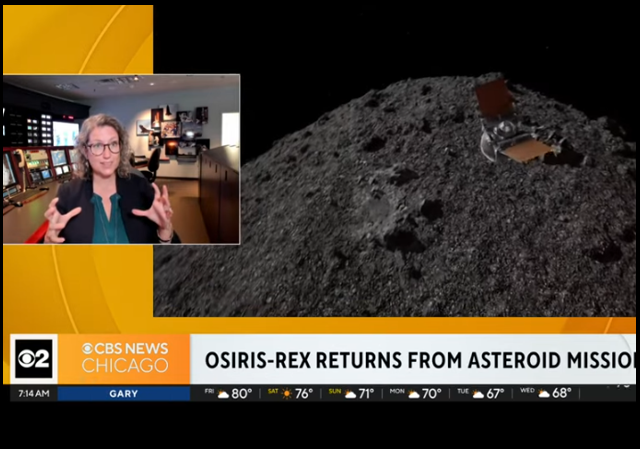OSIRIS-Rex Spacecraft Returns an Asteroid Sample Back to Earth

There has been important space news over the past week.
On Sunday, the #OSIRISREx sample return capsule containing rock and dust collected in space from asteroid Bennu arrived at a temporary clean room in Utah.
An asteroid sample collected by NASA has touched down on Earth, giving scientists the opportunity to learn more about the origins of the solar system and capturing a piece of a massive space rock that has a chance of colliding with our planet in the future. It’s the first time the agency has accomplished such a feat.Seven years after launching to space, the OSIRIS-REx spacecraft flew by Earth Sunday to deliver the pristine sample from the near-Earth asteroid Bennu.OSIRIS-REx, which stands for Origins, Spectral Interpretation, Resource Identification, Security, Regolith Explorer, lifted off in 2016 and began orbiting Bennu in 2018. The spacecraft collected the sample in 2020 and set off on its lengthy return trip to Earth in May 2021. The mission traveled 3.86 billion miles total to Bennu and back.
Ultimately, scientists hope to learn about the Earth and Solar System formation from the samples collected.
Bennu, a near-Earth asteroid, is currently many millions of miles from our planet. Like other asteroids in the solar system, it is a geological relic of the protoplanetary disk — a swirling mix of gas and dust that eventually coalesced into planets — that surrounded our sun billions of years ago. One theory is that small worlds like Bennu once seeded Earth with the prebiotic ingredients needed to form life.But it is difficult to test this idea using meteorites, pieces of asteroids that reach Earth’s surface, which are heated by the atmosphere and are then contaminated by microbes on the ground, Dr. Lauretta said. Instead, many scientists turn their eyes (and their instruments) to space.
NASA’s telling us not to worry about the samples.
So now I am a little worried….
Legal Insurrection readers will recall that the last time I wrote about India’s successfully landed lunar mission to the Moon’s South Pole, the Chandrayaan-3 had detected sulfur in the moon’s soil.
There is also an update to that mission, which may have ended due to a dead battery.
India’s space agency Isro says it is trying to contact its Moon lander and rover as a new lunar day begins, but has not received any signals so far.The lander, carrying the rover in its belly, touched down near the Moon’s little-explored south pole in August.They spent two weeks gathering data and images, after which they were put into ‘sleep mode’ at lunar nightfall.Isro hoped the batteries would recharge and the modules would reawaken when the Sun rose around 22 September.But it is possible that the extreme cold of the lunar night damaged the batteries.
Finally, Speaker of the House Kevin McCarthy recently introduced legislation that would extend a restriction on the Federal Aviation Administration’s ability to regulate commercial human spaceflight safety for eight more years.
McCarthy announced Sept. 21 he has introduced the Space Transformation And Reliability (STAR) Act. The one-page bill would extend what is alternatively called a “learning period” or moratorium on certain safety regulations, set to expire at the end of this month, through September 2031.“As we look to the century and beyond, the commercial space industry is crucial to advancing U.S. national security and scientific discovery, and I am confident that the STAR Act will help continue to provide this industry with additional time to fly, innovate and grow,” McCarthy said in a statement about the bill.The regulatory restriction, which limits the ability of the FAA to promulgate regulations regarding the safety of spaceflight participants on board commercial vehicles, was enacted in 2004 and designed to give industry time to build up experience upon which regulations could be based. The restriction was set to expire in 2012 but has been extended several times since then, and is now set to expire Sept. 30.
CLICK HERE FOR FULL VERSION OF THIS STORY